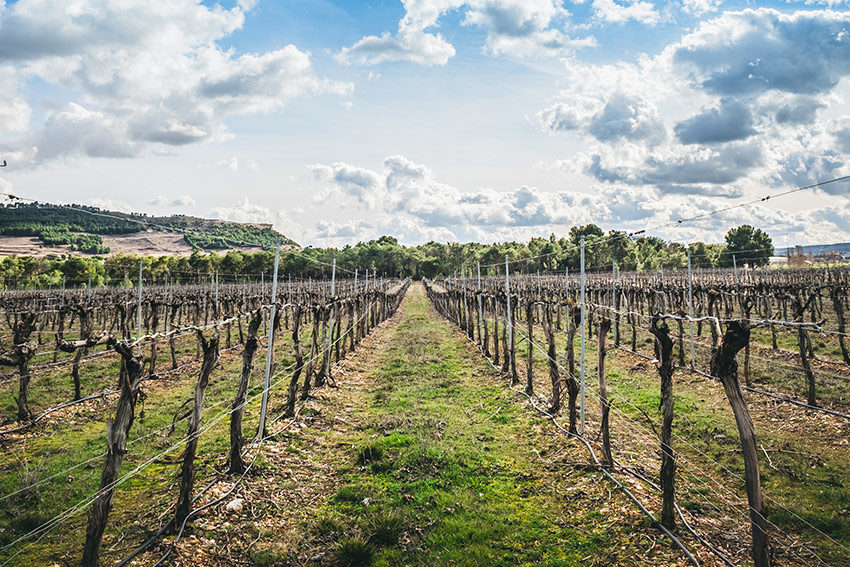Hentley's untempered tempranillo

Its annual national crush may be only in the thousands of tonnes as against the millions of shiraz and cabernet, and we still can’t call it ‘temp-ranee-yoh’ without a hint of self-consciousness, but – even if you stick with the rhymes-with-pillow pronunciation – it’s pretty clear that tempranillo is here to stay.
Tempranillo, a grape that originates from Spain’s Rioja and Ribera del Duero regions, was spruiked as one of the great red hopes among the legion of alternative varieties propagated in Australia in the past quarter-century.
Unlike many others (just how much anglianico have you knocked back recently?) tempranillo now has serious claims to being considered a mainstream rather than an alternative variety.
Its chief virtue, in addition to its ease with our climate? Drinkability.
 If you need an example, look no further than the Hentley Farm 2017 Tempranillo. Emanating from a region and a winery both best known for muscular shiraz, the wine picked up a top 10 spot in the last Hot 100 Wines SA. A major part of tempranillo’s schtick is its easy-drinking-appeal, and the Hot 100 judges were suitably rapt: “A powerful wine with generous and almost playful fruit flavours …A cut above.”
If you need an example, look no further than the Hentley Farm 2017 Tempranillo. Emanating from a region and a winery both best known for muscular shiraz, the wine picked up a top 10 spot in the last Hot 100 Wines SA. A major part of tempranillo’s schtick is its easy-drinking-appeal, and the Hot 100 judges were suitably rapt: “A powerful wine with generous and almost playful fruit flavours …A cut above.”
Hentley Farm, with its vineyards, winery and award-winning restaurant located in the north-western quadrant of the Barossa, is itself less than two decades old, but in that brief span has become justly renowned for a stylish suite of shirazes that includes ‘The Beauty’ and ‘The Beast’.
Andrew Quin, who came to his job via Languedoc, Sonoma and (more locally) Yalumba, has been Hentley’s winemaker since mid 2008. For the past three to four years, he has been auditioning a range of alternative varieties. He says the tempranillo fruit comes from a block at Gomersal, down the road and around the corner from the winery’s home vineyards, thanks to an arrangement brokered through Tanunda footy club connections.
The plan, Quin says, was initially to use the tempranillo for inclusion in a field blend, a role to which the grape is admirably suited.
“We started working with it in 2016 as part of a field-blend concept called ‘The Rogue’, and the idea there was to create a patchwork of the Barossa and a patchwork of varietals, predominantly alternate,” Quin says.
“Now, people talk about grenache being a blender, and obviously tempranillo gets used over in Spain in a similar way. It’s such an even grape in terms of tannin structure, neutral to an extent in terms of aromatics, so it’s a great base for a blend that you can then build around.”
But when it became time to reclassify the batches of wine made from the 2017 vintage, the tempranillo announced itself as worthy of a stand-alone release.
“That wine stood out as being pretty cool and interesting, and really high quality, so we decided to do a little bottling on its own,” Quin says.
The 2018, however, did not quite show the same panache and was relegated back to its blending role. The existence of a 2019 version still hangs in the balance – Quin is going to assess its merits in a comparative blind tasting in a month’s time.
Despite its stuttering start, the Temp will probably reappear on the Hentley Farm list, and the grape clearly holds a fascination for Quin. From his observations so far, he thinks the variety is at its best at lower crop levels that in turn lead to earlier ripening.
“It’s naturally an early ripener, where in the years it hasn’t worked well it’s ripened at the same time as all our shiraz.”
Tempranillo, Quin says, has good berry structure, and the grapes show a tendency to resist “bagging up”, the loss of volume which affects Shiraz in hot and dry spells of weather. “When you get it right in the vineyard, it’s actually a pretty easy grape variety to work with.”
If there is a trap for winemakers, Quin says it is the temptation to overreact to the variety’s naturally high pH, which manifests as low levels of natural acidity. He says many winemakers want to correct this character by adding organic acid.
“The winemaker has to have the balls not to adjust acid too much, and just let the pH be what it is: you’ve just got to let it be.”
There’s a song in that.
Click here to submit your wine into this years Hot 100 Wines 19/20 event